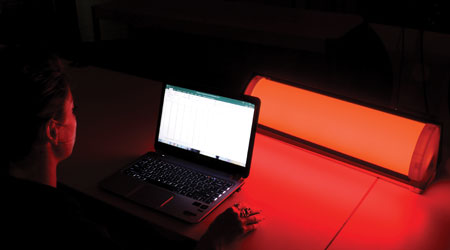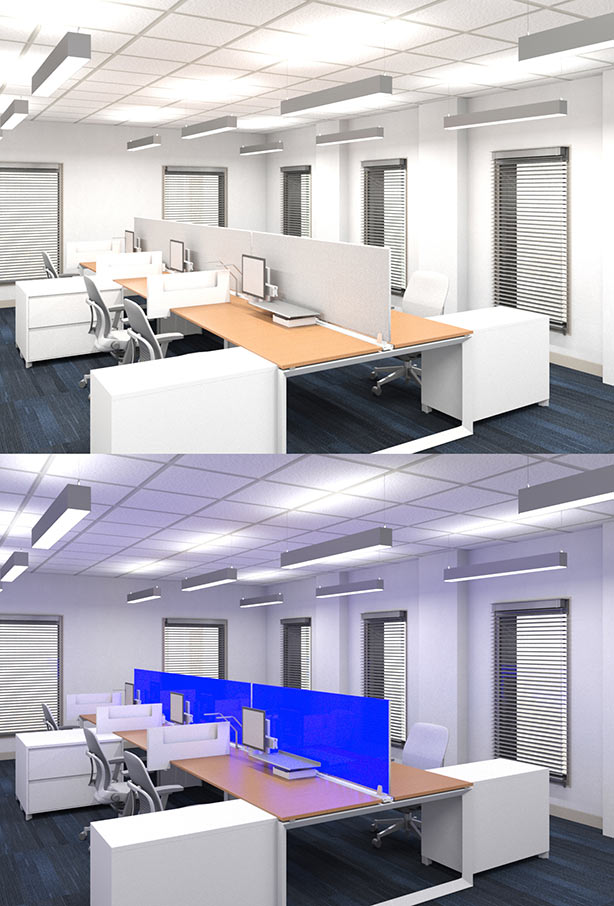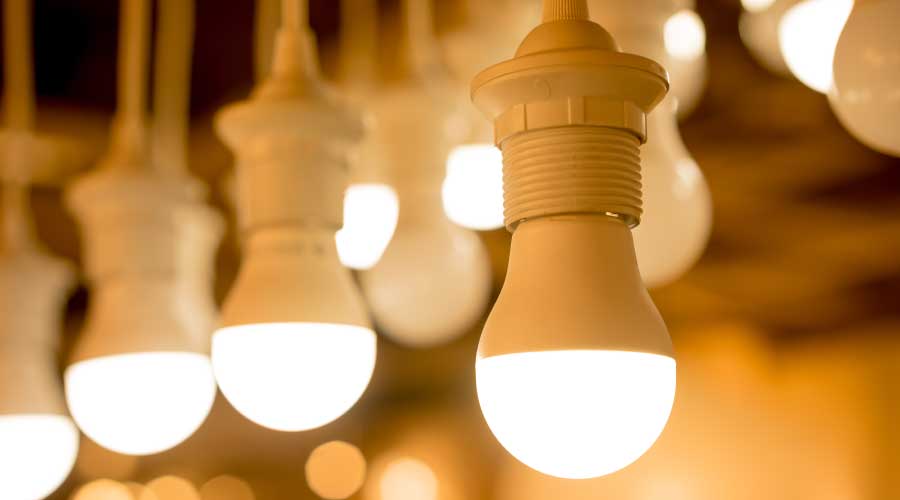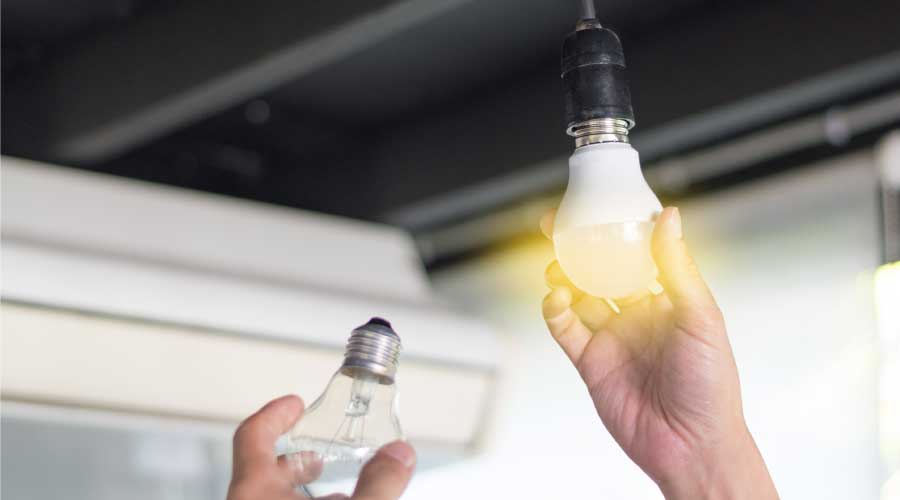 In the evening, an alerting stimulus can be delivered to office workers without disrupting their melatonin cycles via a desktop light therapy box emitting a low level of red light. The effect from this alerting stimulus would be similar to drinking a cup of coffee.Lighting Research Center at Rensselaer Polytechnic Institute
In the evening, an alerting stimulus can be delivered to office workers without disrupting their melatonin cycles via a desktop light therapy box emitting a low level of red light. The effect from this alerting stimulus would be similar to drinking a cup of coffee.Lighting Research Center at Rensselaer Polytechnic InstituteUnderstanding General Principles of Human-Centric Lighting
From morning through evening, light levels and color should synchronize with occupants' circadian rhythms and internal clocks.
While it is very important to keep in mind that the pattern of light and dark incident on the retina must be controlled throughout all waking hours, some general principles nonetheless apply for certain times of day. The specific applications that are available for healthy lighting vary considerably in complexity and cost, ranging from simple low-tech solutions to tunable LED systems on control schedules.
Daytime: Morning lighting should provide plenty of stimulus to help synchronize the biological clock to local time, which in turn promotes a better night’s sleep and alertness that is useful for the day ahead. This can be achieved by increasing the amount of light reaching the eye or by using a blue light source, which can be as simple and cost-effective as providing access to a window or installing a saturated blue LED light therapy box.
When installing new ceiling lights or replacing components of existing lighting, facility managers should select cool-white light sources with higher correlated color temperatures (5000–6500 K) and aim for a light level of at least 500 lux on the workplane. If using a warmer color light source (3500–4000 K), the light level on the workplane should be increased to at least 800 lux. If using a tunable-white system, 5000–6000 K light would be suitable for the morning, 4000–5000 K for midday, and 3000 K by the end of the day.
If investment in new lighting is not feasible due to ROI or specifications that would prohibit changing the correlated color temperatures, simply changing the level or amount of light being delivered by the lighting can beneficially impact occupants’ circadian systems. But it is difficult to generalize about specifications for a given lighting system without considering details such as its spectral power distribution and the levels of horizontal and vertical illuminance being delivered. To this end, the Lighting Research Center has made freely available a circadian stimulus calculator to provide a quick and easy way to estimate the potential average circadian stimulus value in a space using conventional lighting metrics. www.lrc.rpi.edu/programs/lightHealth/index.asp
Evening: About two hours before our normal bedtime, the body increases the production of melatonin, which tells the body that it is night and time for sleep. Higher levels of evening light can suppress melatonin production and increase alertness, making it harder to fall asleep and wake up at the scheduled time in the morning. To prevent this, lighting with warmer spectra and lower light levels should start at least two hours prior to regular bedtimes. In this way, the body can wind down properly and avoid delays to the circadian system, difficulty waking in the morning, and probable sleep deprivation. Self-luminous electronic displays (e.g., cell phones, tablets, computers, etc.) can emit excessive light, so they should be turned off, but research shows that watching television does not affect the circadian system.
Facility managers who are responsible for properties that are used in the evening should ensure that light levels are substantially lowered. Light levels on the workplane should not exceed 100 lux, and the lighting’s correlated color temperature should be around 2700–3000 K. Supplemental workspace lighting should use lower correlated color temperature (2700 K) sources (e.g., desk or floor lamps) and aim for a workplane light level of 30 lux.

(The addition of luminous workstation partitions (bottom) can boost circadian stimulus for office workers in a conventional space (above) by delivering an increased amount of blue light to the eye during the day. Research has shown that higher amounts of daytime circadian stimulus would be beneficial to office workers. Credit: Lighting Research Center at Rensselaer Polytechnic Institute)
Capabilities and limitations
The current capabilities and technologies of human-centric lighting are constantly changing and expanding, but a consistent thread that connects them is the use of LED systems in configurations that range from dim-to-warm tunable (typically 1800 K to 2700–3000 K) through two-color tunable-white light (typically 2700 K and 5000–6500 K) to full-color tunable products employing three or more different colors (spanning as much as 1650–8000 K). A variety of controls are also available for these systems, which can provide personalized settings in limited zones of light or facility-wide schedules controlled via wireless or Ethernet and accessed using personal electronic devices. When selecting between these configurations, it is first crucial to establish what a given lighting system needs to accomplish before engineering a solution. Is color perception important for the system? Is the promotion of circadian health its primary value? Or is it both? And also keep in mind that circadian-effective lighting can be implemented by simply changing light levels, if the budget does not allow for color-tunable systems.
As the field abounds with competing proprietary systems, a significant limitation of currently available human-centric lighting technology is a lack of agreed-upon standards between manufacturers and confusion among regulatory bodies and policymakers, designers, architects, and end-users about what, how, and whether the systems can deliver what is promised. Underlying this limitation, however, is perhaps an even more significant one that concerns a lack of agreement among the very research scientists upon whose work human-centric lighting is based. Despite widespread agreement that light can clearly benefit health and visual performance, many researchers in the field have indicated that there is a lack of, and an urgent need for, comparable metrics and analytical methods to fully predict and explain lighting’s effect on the circadian system. Without such agreement, some argue, it is impossible to tailor lighting applications for a specific effect on the circadian system.
There is no reason to believe that this theoretical impasse will endure, however, and there is even less reason to believe the development of human-centric lighting will be curtailed any time soon. After all, it has only been 15 years since the discovery of the process used by the retina to convert light into signals that regulate the timing of the circadian clock. The science is still young, in other words, but the precocious lighting technology that it spurred is showing every sign of reaching maturity over the next decade, or even sooner. In any case, it is widely acknowledged and well established that a regular, 24-hour pattern of light and dark mimicking the solar day helps to reduce circadian disruption and is beneficial to human health and well-being.
David Pedler is a senior communications specialist at the Lighting Research Center at Rensselaer Polytechnic Institute in Troy, NY. Mariana G. Figueiro, Ph.D., Fellow IES, is director and a professor of architecture at the center. She can be reached at figuem@rpi.edu.
Email comments to edward.sullivan@tradepress.com.
SIDEBAR: Tracking Light Exposure Beyond Buildings
If lighting is indeed human-centric, given what we know about the circadian system, it must be adapted to follow humans between the spaces they occupy, from home to work, to retail and recreational spaces, and back home again when they retire for the evening in preparation for the day ahead.
As a model, commercial real estate owners and managers might look to an endeavor known as the Swedish Healthy Home, which is a joint research project involving the Lighting Research Center at Rensselaer Polytechnic Institute, Lund University, and the Swedish Energy Agency. The system developed for the project employs an integrated network of light and activity sensors to track and record personal 24-hour light exposures, interpret how that light is interacting with the circadian system, and then make any necessary adjustments to the lighting in any space a person happens to occupy. It is not inconceivable that analogous systems, aided by new and expanding technologies such as IoT infrastructure, could do the same for people from the moment they wake up to the time they return home to bed.
Related Topics:














